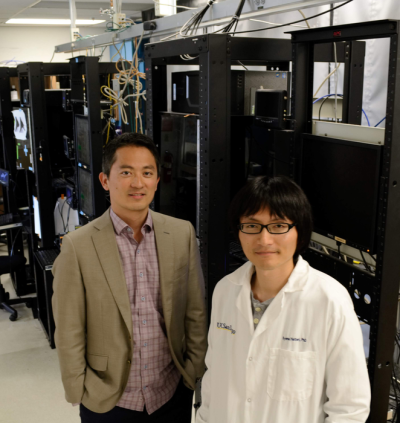
Professor Takaki Komiyama (left) and Postdoctoral Scholar Ryoma Hattori. Image credit: UC San Diego
In 2019 University of California San Diego researchers discovered the area of the brain where “value decisions” are made.
An area within the cerebrum known as the retrosplenial cortex (RSC), they found, is the site that we use to make value choices such as which restaurant we decide to visit for tonight’s dinner. We then update the RSC with fresh information based on the new impressions of how much we enjoyed the evening’s soup and pasta.
New research led by Division of Biological Sciences postdoctoral scholar Ryoma Hattori and Professor Takaki Komiyama is now revealing details about how such dynamic information is processed. The results, published Nov. 23 in the journal Neuron, show that persistency allows value signals to be most effectively represented, or “coded,” across different areas of the brain, especially the RSC.
To further test their findings, Hattori and Komiyama tapped into their “big data” trove of more than 100,000 mouse decisions recorded during the experiments. They programmed artificial intelligence (AI) networks to imitate behavioral strategies in computer-based reinforcement trials and found remarkably similar results to the real-world experiments.